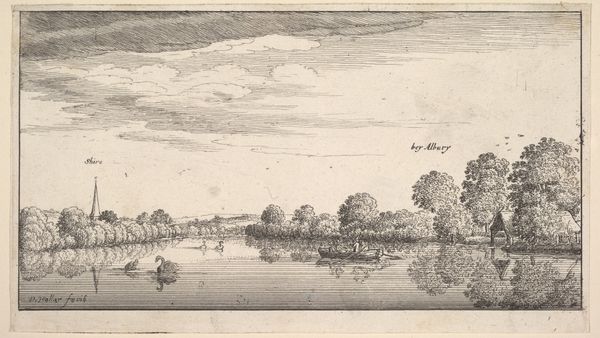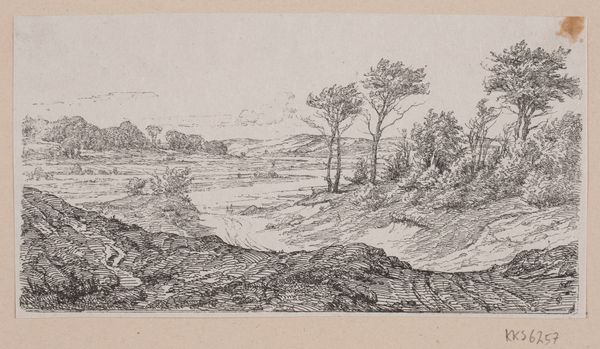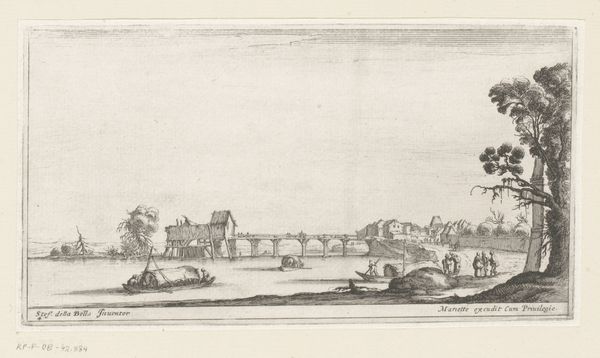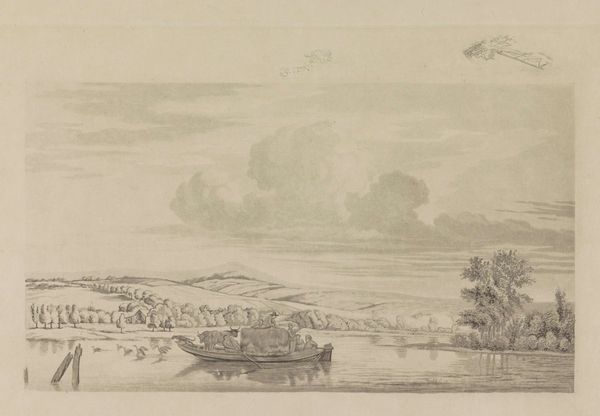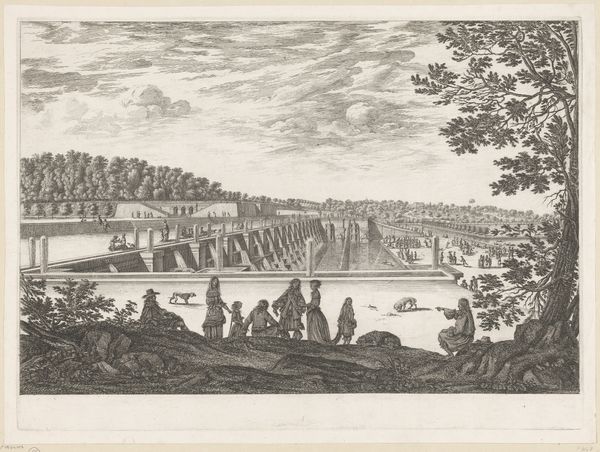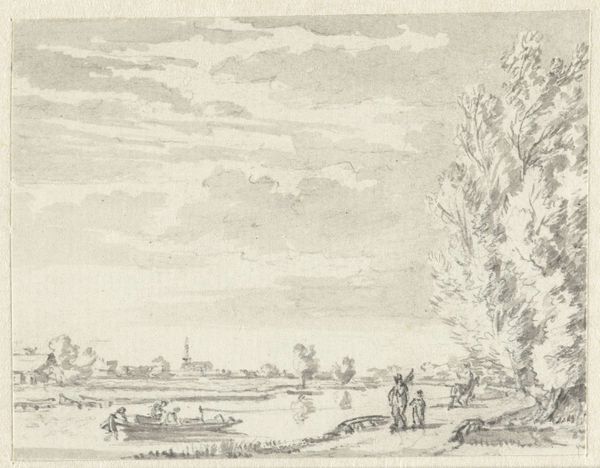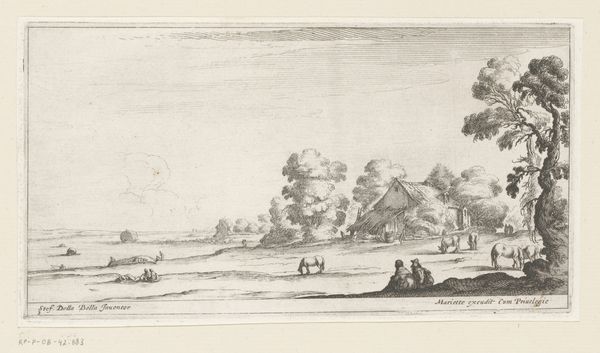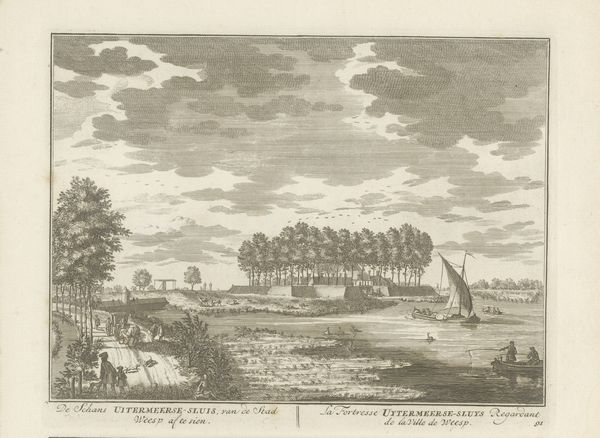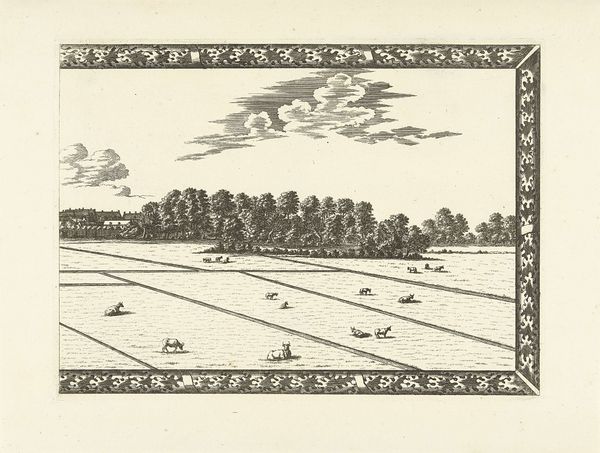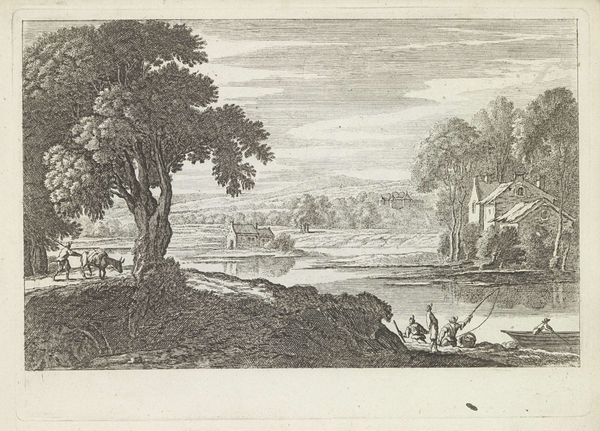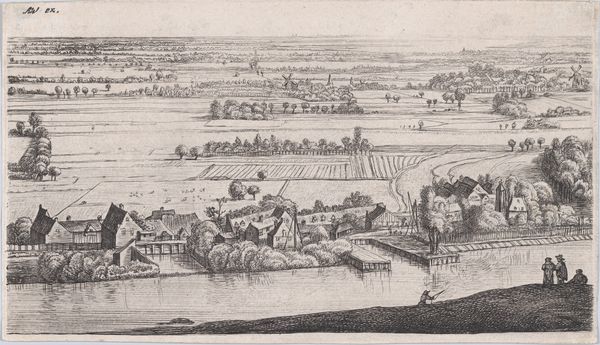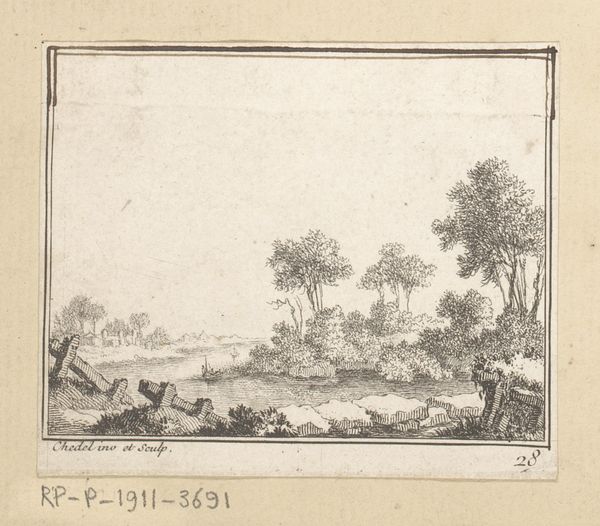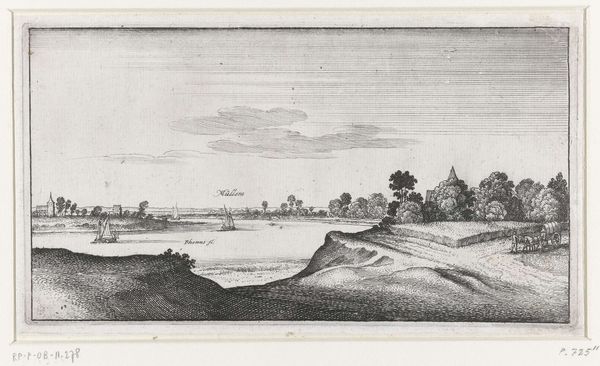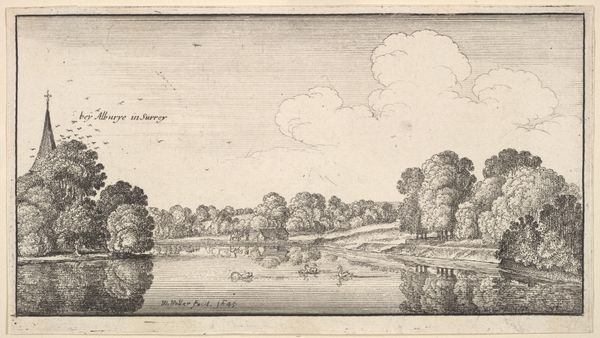
drawing, print, etching
#
pen and ink
#
drawing
#
pen drawing
#
dutch-golden-age
#
mechanical pen drawing
# print
#
pen illustration
#
pen sketch
#
etching
#
old engraving style
#
landscape
#
personal sketchbook
#
pen-ink sketch
#
line
#
pen work
#
sketchbook drawing
#
cityscape
#
genre-painting
#
realism
Dimensions: height 230 mm, width 308 mm
Copyright: Rijks Museum: Open Domain
Curator: This is "Panoramisch gezicht op Den Haag," a panoramic view of The Hague, created sometime between 1663 and 1728, and attributed to Cornelis Elandts. It is an etching, with pen and ink details. Editor: My initial impression is tranquility. The scale seems vast, but rendered with an almost painstaking level of detail that is grounding. What strikes you most about the work from a material perspective? Curator: Immediately, it’s the contrast between the delicate medium of etching and the expansive subject matter. The level of fine line work is considerable and must have involved painstaking labour with precise engraving tools and presses. Note the use of line work to indicate the differing landscape features. Editor: Right, consider the implications for those working the land in this panorama. There's a real tension between the depiction of labor as this quaint, almost idyllic scene and the back-breaking reality of agrarian life for the working class at this time. This feels almost propagandistic in its calm depiction. Curator: The use of etching allowed for the mass production and distribution of this image and many others of this period, enabling these idyllic scenes to enter broader circulation. Editor: Exactly, so we're seeing an early form of mass media shaping perceptions and reinforcing societal norms. The image aestheticizes labour, presenting a controlled and peaceful vision. Look how small and neat the workers in the fields seem! How this depiction served as social or political tool is certainly of significance. Curator: Indeed, this etching acted not merely as aesthetic document, but played a material role in the social imagination. Consider the role that The Hague occupied during that era: center for governance. Editor: A real point! A landscape like this is more than scenery; it is bound to power. I wonder what someone toiling away in those fields made of such an image, or whether it would be out of their reach to obtain such image for that matter? Curator: It forces us to rethink simple notions of what a landscape represents; that a simple appreciation misses crucial elements relating to both production and also access to visual culture at that moment. Editor: Precisely. Looking closer, the pen and ink adds to the story, suggesting modification of an already reproducible method of making. And, thinking critically, images like these contribute to shaping our understanding of labor practices during this time period. Curator: Exactly. A piece of craft work as an agent for visual understanding and how such method, now long abandoned by most image production still bears historical value as evidence. Editor: Thank you. It’s important to remind our listeners that so much can be gathered through studying how a visual is constructed, delivered, and consumed!
Comments
No comments
Be the first to comment and join the conversation on the ultimate creative platform.
